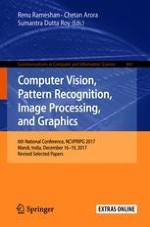2018 | Buch
Computer Vision, Pattern Recognition, Image Processing, and Graphics
6th National Conference, NCVPRIPG 2017, Mandi, India, December 16-19, 2017, Revised Selected Papers
herausgegeben von: Renu Rameshan, Chetan Arora, Sumantra Dutta Roy
Verlag: Springer Singapore
Buchreihe : Communications in Computer and Information Science
